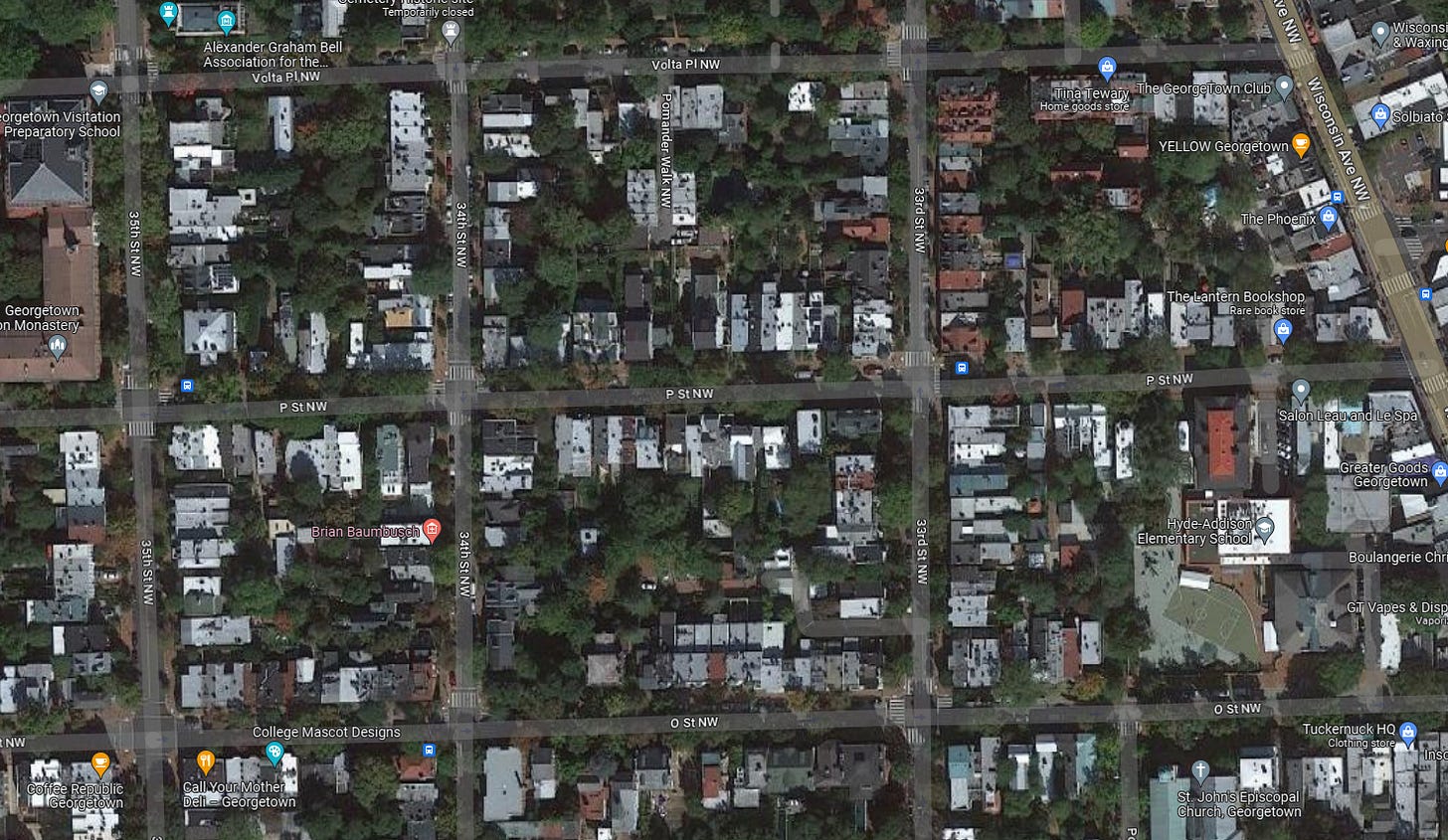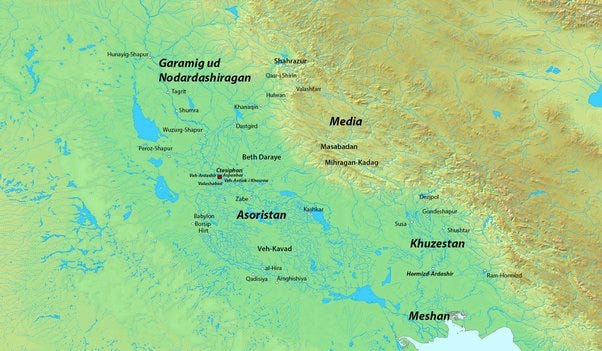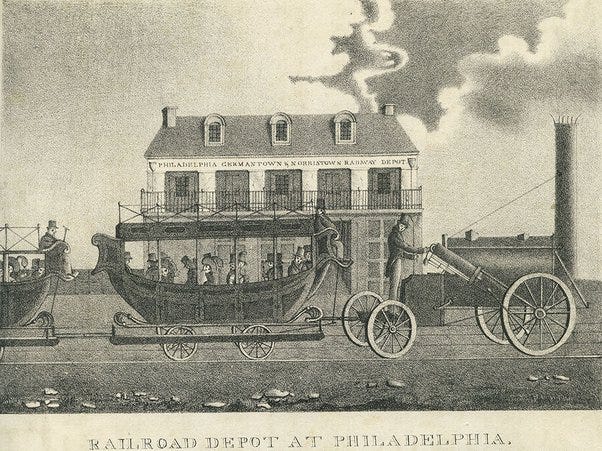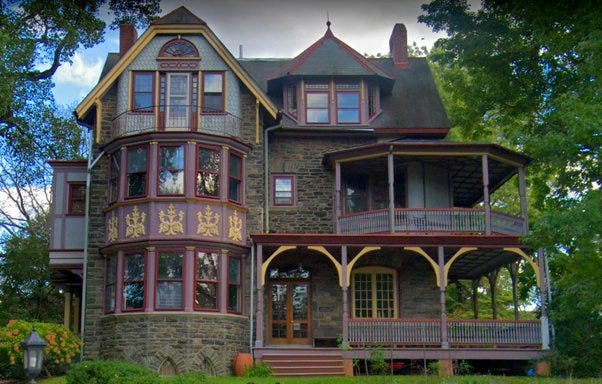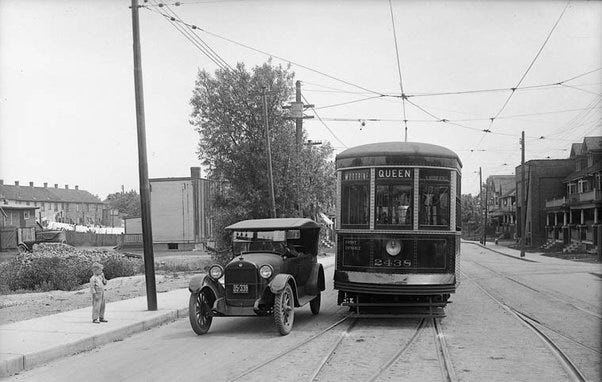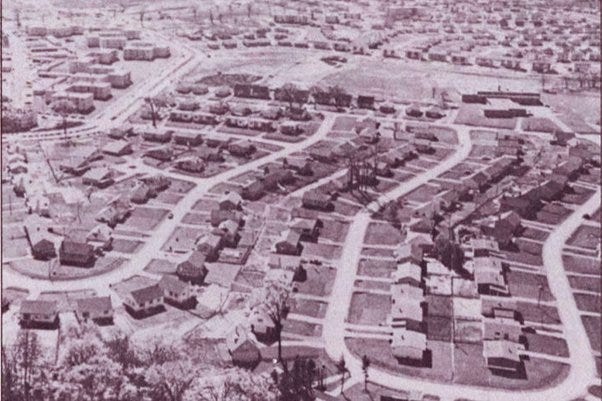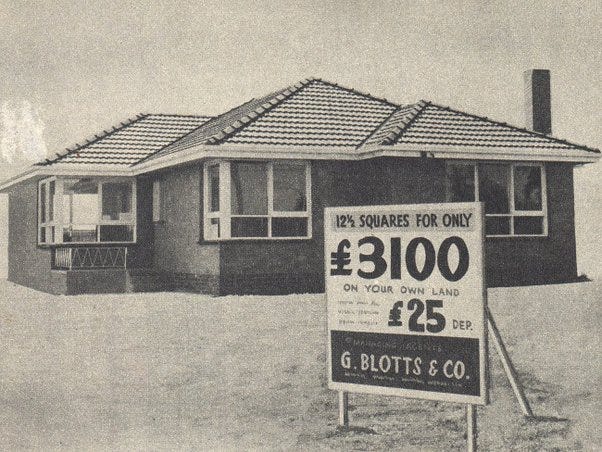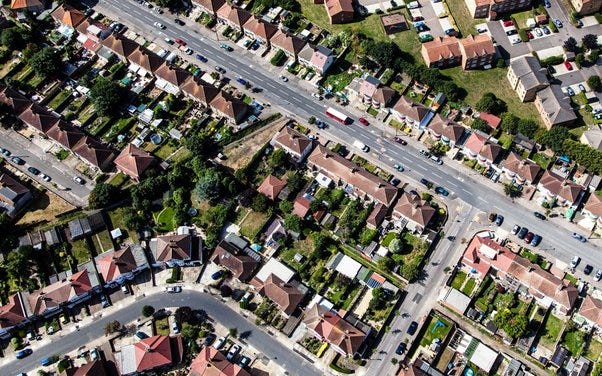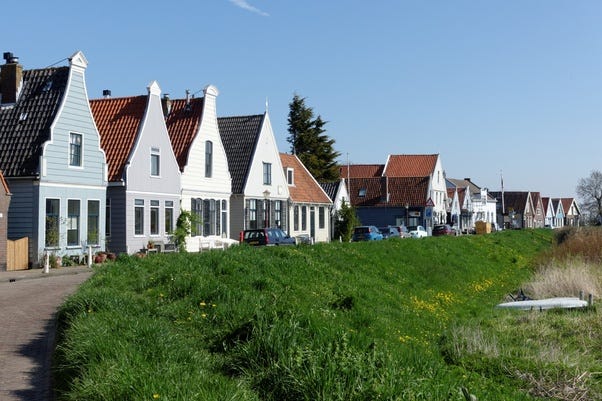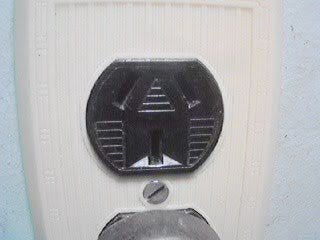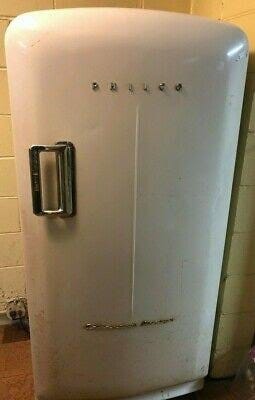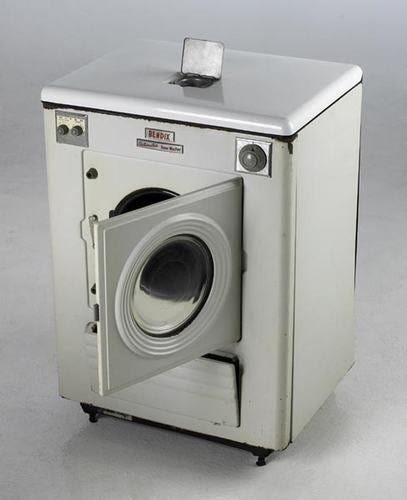The urban legend of the suburbs goes something like this, in 1940 we were all living happy, wonderful lives in neighborhoods like Park Slope, the North End, Westlake, and Lincoln Park. Then, at some point ca. 1950, GM and Firestone colluded to rip out all of the streetcar tracks and everyone bought a car. The interstates obliterated all of our best neighborhoods, there was a pandemic of Rapid Onset Racism, and all the white people used their new cars on the new interstates to get to the new suburbs.
It’s so neat, so tidy, so simple. That’s US urban history in one paragraph. Except it’s not really US urban history. It’s a bunch of thought terminating clichés strung together. The purpose is that you accept it and you stop asking questions. The problem is that, well, we have real problems that need solving. If you have an incorrect understanding of how things got this way how would you ever hope to solve the problems?
I feel quite lucky that, at the beginning of my urban studies, I had Robert Fishman as one of my lecturers. It was a sort of vaccine against a lot of the bullshit that I would encounter later. If you have the time and the inclination I highly recommend his book, Bourgeois Utopias: The Rise And Fall Of Suburbia.
The actual truth is that Americans have been moving to suburbs for almost 200 years. I say “moving to the suburbs” in the sense that they lived in the city and at one point moved to a primarily residential area of single family homes. On the other hand, Americans have always lived in detached, single family homes. No one was living in a 4-story walk up in Lexington ca. 1776. To the extent that Americans were living in urban environments 200 years ago, they didn’t look like Manhattan. They looked like Georgetown.
Modern, high rise buildings are only possible because of the elevator. Dense, urban life without regular outbreaks of cholera are only possible because of modern sewer systems. The concept of a high-rise city is, at best, 130 years old.
Suburbs, on the other hand, are old. Almost as old as the 10,000 year history of cities themselves.
Look at the center of this map below and you’ll see the Persian capital of Ctesiphon. After Khosrow conquered Antioch from the Byzantines he forced the inhabitants to move but also incentivized the brain drain from Byzantium. To be fair, Antioch was well known at the time as a bit of a shithole, even before Khosrow sacked it, so it probably wasn’t too hard to get people to leave.
Khosrow built a new suburb just outside of Ctesiphon and he called it “Veh Antioch i Khosrow.” Like the Pultes and Hovnanians who came after, the Sassanian King of Kings built a new town in 540 AD and called it “Better Antioch, by Khosrow.” Then he hired a bunch of people from Antioch to work in his government and live in this new town. He then built Roman Baths and a Circus in the hopes that more skilled Byzantines would follow.
If Ctesiphon was Washington, DC then Veh Antioch was Rockville, MD. In that sense Veh Antioch is probably better described as a satellite town with many of its own basic services (no one was walking to Ctesiphon for a loaf of bread). People lived there so that they could work in the city and support the functions of government without having to live in the city.
Wealthy Romans were big fans of their suburban villas - especially in the summer.
They didn’t live there year round because their business was in Rome and transportation was slow. It wasn’t possible to commute. Still, even in the city, wealthy Romans lived in villas (large, detached, family compounds.) The insulae (apartment buildings) were for the plebs.
And of course, who can forget Versailles. Wealthy Parisians had been building villas outside the walls for nearly two centuries before the French elite lost their heads. The Royal Palace was moved to the suburbs because the elite were already there. Not the other way around. (Paris in 1615, below). The elite suburbs of Paris blossomed thanks to the invention of the wagonway ca. 1600.
For a long time the suburbs have been a sort of utopian vision of what a modern, urban life could be. That’s not say that it is or that it should be. It’s just to say that enough people around the world have thought it could be to give it a solid go.
William Penn threw his hat in the ring ca. 1682 with his Plan for Philadelphia.
This is a proto-plat of the city. Most of the city blocks are 5–8 acres and you can see that it’s parceled into lots that are roughly 1/2 to 1/4 acre in size. This was meant to be detached housing in a style that we would recognize as suburban or, as Penn put it, a “Greene Countrie Towne.” But Penn didn’t count on people subdividing the property and building new streets to make the blocks smaller. Instead of looking like a less dense version of Savannah or like an 1890s railroad suburb, the settlers to Penn’s colony just built what they knew - a newer version of an English town.
Suburbanization that we would recognize in the US was observable by the mid-1840s. Railroads started popping up in the early 1830s and wherever there was regular passenger service within a short distance of downtown, residential neighborhoods sprouted. Mass suburbanization, in a way that we can easily recognize (many of us live in these older suburbs) really took off in the early 1890s after the invention of the electric streetcar. It accelerated between 1908 (Model T) and 1929 before being interrupted by the Great Depression.
Suburbanization in the US certainly began well before WWII and has always been about a steady march of technology and improving socio-economic conditions. The only thing that’s really new about suburbs is how many of us live in them. (The linked paper above was originally posted on the Maryland DOT website but has since been removed - I’ve updated the link to an archived version.)
In cities like Philadelphia, virtually all of West Philly, Mt. Airy, Chestnut Hill, and parts of Germantown were built as suburbs beginning in the late 1830s and being mostly completed by the 1920s. Those pre-War (WWI) suburbs stretched well beyond the boundaries of Philadelphia, sprawling into neighboring Delaware County and Montgomery County.
Why it happened is mostly due to technology. Why it rapidly accelerated after WWII comes down to the confluence of that technology with rising household incomes. In other words, before the technology was there people could work in the city but live outside of it only if they were wealthy enough. Technology made it cheaper but didn’t remove all barriers to entry. The confluence of improving tech and rising incomes allowed for mass suburbanization.
The very wealthy in the US were establishing suburban communities around big cities by the 1840s. The first passenger railroad in Philadelphia began service in 1832.
But you had to have real money to live outside the city back then. You needed to be able to pay people to travel for and/or deliver the things you could no longer walk to pick up (i.e., you had live-in servants who did those things for you.) Have you seen Downton Abbey? Servants walking into town to pick up groceries? Think of a smaller version of that. To walk even 3 miles into town, do your shopping, and walk back would take well over 2 hours. A horse and carriage would cut that down to an hour but would cost a lot more.
The upper middle class began their big shift to the suburbs in the late 1880s. Some of them were already there, along some of the busier rail lines, but their institutions and social circles were in the city. The electric streetcar changed all that.
Streetcars existed before the 1880s but they were horse drawn and thus expensive. Getting rid of the cost of stabling 4 or 5 horses for every streetcar brought costs down significantly which meant lower fares and more rapid expansion. A family could still have a somewhat suburban lifestyle but still be in relatively close proximity to goods and services. Those big Victorians you see in a town near you? Yes, those. The third floor was usually for their servants. At a minimum a maid and a cook.
The middle class began their migration in the 1900s but it started as more of a trickle. These are the bungalow neighborhoods you’ve seen before or possibly grew up in. The Craftsman was a huge part of this. These families didn’t have, nor could they afford, any domestic servants.
After WWI (1919) the middle class, suburban boom was in full swing with some 900,000 new homes being built in the suburbs every year. That middle class party didn’t last very long. From 1929–1949 most people with middle class aspirations had to wait. It’s also important to note that in the US hardly any housing was being built yet the population continued to grow. The housing that did remain was increasingly obsolete and much of it falling apart. No one had the money for repairs.
In some of the older neighborhoods in some of the oldest cities - New York, Philadelphia, Baltimore, etc. - up to 15% of the housing units lacked a full bathroom and nearly half lacked hot water. These are rowhomes in Baltimore (below) ca. 1920. Note the outhouse in every backyard - also. note that the larger homes on the left have ground floor additions. When these houses got running water the custom was to add a kitchen on to the back of the house. When they finally got indoor plumbing they typically added a bathroom as a 2nd story to the kitchen. Philadelphia and Baltimore are still full of homes exactly like this.
Even into the 1950s many apartments had shared kitchens and/or bathrooms. Some might have had a toilet and sink but had to share a bathtub with other tenants. This was especially bad in big cities in the 1940s and early 1950s since so many people from small towns and rural areas had moved to bigger cities to work in the War industries and had to double up. Seriously, though. The number of people who lacked private, regular access to a flush toilet in 1940 was staggering.
By 1945 everyone wanted out of that housing. People wanted to move and cities wanted to get the bulldozers out to start over. It may have been a bad move in hindsight but with the knowledge and tools of the time, it was the right thing to do for them.
OK, “that’s housing” you say, “what about all the jobs?”
The downtown and urban core decline of most US cities didn’t set in until the 1960s when the real shift in retail and manufacturing formats began. As we covered in the beginning, there are lots of folk tales about why this happened - racism, redlining, the interstate highway system, urban renewal, a conspiracy by the automobile industry, etc. Like most conspiracy theories, they all have a toe in the swimming pool of reality but none of them can swim.
We’ll get to urban core decline but first let’s put the myths to rest. If you look around the world to other countries that would’ve been considered industrialized in 1955 -
Canada (Don Mills near Toronto)
even the Netherlands
and Argentina
With the exception of Argentina, these places all began to suburbanize to varying degrees around the same time the US did, just not to the same extent. In Canada, Australia, New Zealand, and the US the suburbs are fairly similar as is the timing. They’re generally a mix of townhomes, twins (two townhomes sharing one wall) and fully detached houses. The UK and the Netherlands have historically leaned in the direction of detached and attached single family housing (townhomes and twins.)
That last part is important. Detached housing is a cultural tradition going back thousands of years. Apartment buildings (insulae) are a Mediterranean phenomenon that the Romans brought with them as they advanced into Northern Europe. Townhomes were a Northern European, medieval response to having to fit into walled cities. They also proved popular during the industrial revolution when throngs of people began to crowd into cities. This wasn’t just the norm in Europe. Even in ancient China and Japan (even just 200 years ago) the norm was that people lived in houses, not apartments.
Almost since the beginning, big homes on large lots have been the aspiration in the US and Australia. In part because it’s the cultural norm and partly because we had room to spread out. New Zealand and Canada were much like the US and Australia until the 1990s when, for different reasons, they turned in the direction of townhomes. The common thread here between detached and attached single family housing is the fee-simple ownership which is a nearly 800-year old common law legal tradition. To be fair about Argentina, most suburbs trend lower income but the point is that middle and upper income suburbs do exist there and that they’re mostly built on the same model as in the other countries.
How and why did particular types of suburbs expand all over the world in the 19th and 20th centuries in very similar manners? There are technological advancements that made the suburbs possible for the middle class that are obvious like the electric streetcar and the private automobile.
But then there are less obvious factors such as the Home telephone - 1890s
Incandescent bulb mass production begins 1911.
The 15amp outlet - patented in 1914 - now people can run major appliances at home.
Refrigerator - mass production begins 1918
Automatic washer - 1937
Without these things very few urban dwellers could afford to live very far from work, relatives, a grocery store, or a laundromat (again, unless you had domestic servants to do them for you.) Of course, even after they were invented, most people couldn’t actually afford these things until the 1950s. The suburbs are about the march of technology and the relative affluence of a society. Suburbs in Melbourne were not caused by conspiracies between American car and tire manufacturers in the 1940s.
The technological advancements of the industrial age allowed for changes in our domestic life across continents but they also allowed for dramatic changes in manufacturing and logistics. The precursor to the modern forklift appeared ca. 1906. By 1917 it was being used in factories and warehouses. Euclid v. Ambler, the famous Supreme Court case, happened in 1926 because the Ambler Co. wanted to build a giant factory on 68 acres in the suburbs. There were no vacant, 68 acre sites to be found in Cleveland in 1926.
The modern forklift emerged through a series of big improvements throughout the 1930s and by the end of that decade we got the standardized, wooden pallet. Standardization facilitated new and easier ways of shipping. This new forklift machinery needed more space to work in and a single floor warehouse was preferred for ease of access. Land for vast assembly plants and warehouses was much easier to find and much cheaper to build in the suburbs.
Shipping containers became standardized through the 1950s culminating in a global standard in 1968. As a result, shipping costs fell dramatically. Factories and warehouses had less need to be on expensive land near the ports. They could move to modern facilities that accommodate their new equipment. This shift in manufacturing and distribution explains the big shift in retail that happened right on its heels.
Freight didn’t become intermodal overnight. It was a gradual process of improvements that WWII help to accelerate. By the late 1930s, as soon as a forklift could get a pallet off of a truck, suburban retail was an inevitability. As soon as the first shipping containers appeared, big-box retailers were a foregone conclusion. You had long been able to live in the suburbs and buy basic necessities but now you could also shop there. As soon as the shopping moved to the ‘burbs the office jobs followed.
The interstates! Sure, there’s a feedback loop element to it but the first limited access highway appeared on Long Island in 1908. At that point there were already 2.5 million people living in the suburbs around NYC. The Long Island Parkway system was planned in the late 1920s. Planning for the NJ Turnpike began in 1938 and freeway planning in LA was happening around the same time. In the NYC suburbs none of this particularly important or special at the time. The city was full, the neighborhoods around the commuter rail stations were already built, new suburbs were just a natural place for residential growth to happen. None of it mattered until the late 1950s when the suburban strip mall began to pop up. As soon as that middle class money no longer had to get on a train into the city to shop for clothes it would be lights out for downtown retail for decades.
Australia and Canada also saw urban core decline in the 1970s and 80s but nothing on the scale of the US. If there’s a defining difference between US cities and their peers in Canada and Australia, in my opinion, it’s down to three things:
There was no population shift to the Sunbelt. Canada doesn’t have one and in Australia it’s the whole country. The US has over 300 large to medium size metro areas. In Canada and Australia it’s a few dozen. If you’re a business there are a limited number of places to move your operations.
The federal governments in Canada and Australia didn’t have an urban interstate program. That’s not to say that Calgary doesn’t have freeways or that Brisbane doesn’t have motorways. They certainly do. It’s just to say that the money to build them was mostly local and state/province. The feds may have contributed some money to building them but they never said, “Oi! Plan some motorways. We’ll pay 90%.”
Canadian and Australian cities were much smaller in 1940 and were not nearly as dense as their US counterparts. It’s difficult to make direct comparisons because the Toronto and Sydney of the time had more of the traditional borough format and the available data reflects those old municipal boundaries. However, in 1941 the City of Toronto was 37.5 square miles with a population of 631,207 or a population density of 18,020 people per square mile. By comparison, the inner 37.5 square miles around Philadelphia City Hall would’ve had a density of around 37,000 per square mile. Sydney still hasn’t fully amalgamated but, for example, the Inner West district immediately adjacent to the Sydney CBD is more dense now that it ever was and has a population density of 13,470 ppm. The smaller size and lower density means that, among other things, new factories and warehouses were built on the edge of the (smaller) city instead of further out, the average age of the housing stock wasn’t nearly as old as in a city like Chicago or New York, and more people were living in detached homes and townhomes that were/are much easier to retrofit for new plumbing and electrical.
Here we are, 1,500 years after the sack of Antioch and we all have wi-fi and mobile internet. In our post-Covid world many of us do no more than stroll across the house to get to work and since many of us aren’t going into the office, it doesn’t really matter where we live. It’s already apparent the effect that this new tech is having on and will have on cities. The impact on the office market has been real and immediate. Why would anyone believe that technological innovations in the past had less of an effect on urban life?
Finally, think for a moment about your own life. How often are you getting things delivered to your door? How often were you going out to eat or having a meal delivered to your home? How often were you booking a personal ride because you couldn’t or didn’t want to drive yourself? Hardly anyone these days has live-in servants but shockingly, most of us now have access to them on demand. The name has morphed slightly since the Guilded Age. Instead of “service” it’s now known as the “service industry” or, to people who work in it, “the industry.” Now think about how on-demand service has been made possible and how much of it is accessible even to the working classes, many of whom are employed in some aspect of that industry themselves.
Now think about what impact all of that has on the retail market. Everyday more shops close permanently because you buy your crap online. Even in the suburbs, strip malls are less likely to be home to retailers and more likely to be home to a supermarket, fast/casual restaurants, and services like hair, nails, fitness centers, yoga, etc. What kind of names will people be calling you 50 years hence because you bought something online because you could. What kind of stories will they make up about your rationale for doing so? Will we hear stories about how Amazon colluded with FedEx to buy up the strip malls, tear them down, and replace them with Amazon Hubs?


